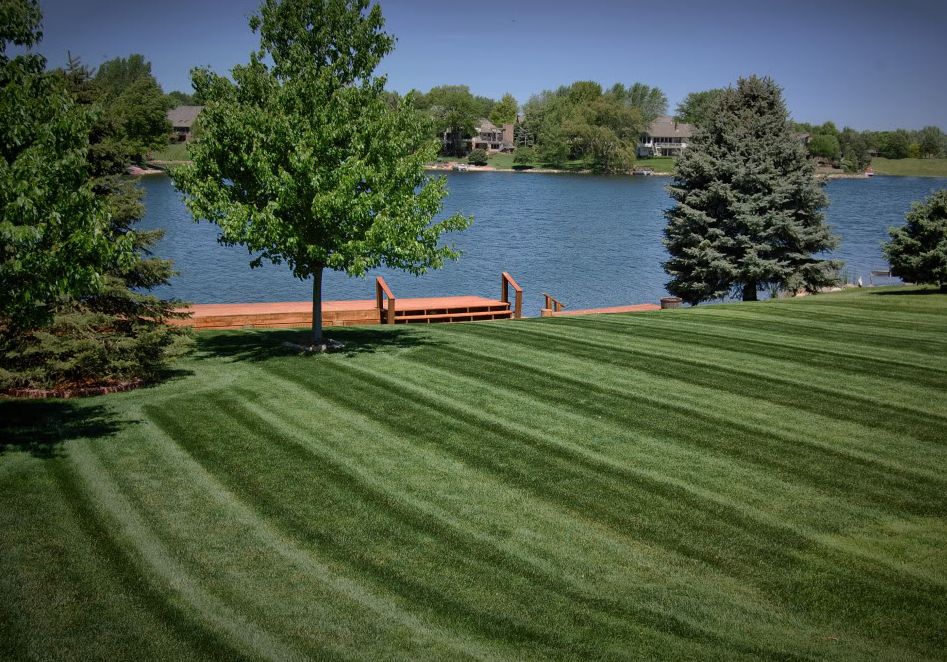Connecting Our Waters conducted a survey focused on waterfront property owners whom have completed shoreline restoration projects. Almost all the people interviewed added an area of native plants to the edge of their waterfront property to reduce run-off, improve infiltration, and improve habitat for wildlife. One of the questions asked during the survey was, “What do you think are obstacles that cause other property owners to not complete a shoreline restoration project?”
Ten of the twenty-five people we talked to (40%) believe it is because their neighbors enjoy having a lawn down to the lake. It offers an obstructed view to the water and looks neat and tidy. Most people said that their native shoreline plants can look messy throughout the season and that may not be attractive to everyone.
So, let’s talk about lawns and proper lawn maintenance. A properly cared for lawn can aid in slowing down water, allowing for proper infiltration as well as capturing any pollutants the water may have in it.
Soil health is a crucial component of helping water get back into the ground. A deep and strong root system is one part of making soil healthier. Native plants have great, deep root systems and are very good at helping water get back into the soil but as our survey respondents noted, they look messy and can be unappealing to some people. Turf grass species, or species typically used in lawns, do not have deep roots but can create a dense network of roots. This dense network of roots has been found to be beneficial in urban and some rural environments.
The University of Minnesota – Extension has done a lot of work to study how turf grass can aid in some of the same benefits as native plants. More information can be found here: http://cues.cfans.umn.edu/old/extpubs/5726turf/DG5726.html
Steps you can take to improve the health of your lawn:
- Get a soil test completed to see what your lawn needs.
- Your local UW-Extension agent should be able to help
- Raise the height of cut on your lawn and cut less often
- Taller grass allows for deeper and denser roots to form
- Feed your lawn fertilizer but only when needed – always stick to the recommended application rate – do NOT over apply
- Make sure there is a buffer (native plants, no-mow grass, or an imaginary boundary) between your lawn and the water. Do NOT allow grass clippings, fertilizers, or weed killers to directly enter the water.
- Water when needed but do not over water. Healthy green grass will hold onto soil and water better.
- Check out the My Lawn App as a tool to assist in proper lawn maintenance
There are also alternatives to the regular turf grass that may provide a few more benefits to the soil but still look like a manicured lawn. One example is adding strawberry clover to your lawn. It can be mixed in with regular grass seed or can be planted just by itself. Strawberry clover helps fix nitrogen, is drought and shade tolerant, offers flowers for pollinators, and has a deeper root system than turf grass. Another alternative is tall fescue grass. It is a small green grass but has a slightly deeper root system than turf grass but does not need to be cut as often.
Native plants and no mow are some of the best alternatives to a traditional lawn but if messy is not your style, consider making your lawn the best lawn it can be.
Emily Henrigillis is the Watershed Coordinator for Connecting Our Waters, a program of the Fox-Wolf Watershed Alliance. Contact her at 920.851.6472 or emily@fwwa.org.

